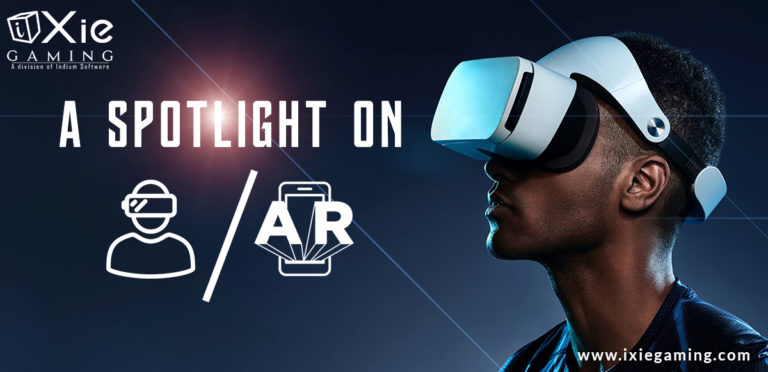The world of video games is constantly evolving. Captivating visuals and immersive art design are essential elements that can make or break a player’s experience. Game art production plays a crucial role in bringing virtual worlds to life, capturing the imagination, and enhancing gameplay. Whether you’re an aspiring game artist or a seasoned professional looking to refine your skills, understanding the fundamental principles and incorporating effective techniques can help take your creations to the next level.
This blog presents a list of the top game art design tips that will empower you to enhance your work and create visually stunning game environments. We will explore techniques for creating visually stunning characters, environments, and objects, as well as ways to optimize your workflow and improve your artistic process. The tips cover a range of key aspects that contribute to the overall aesthetic appeal and visual storytelling in games.
1. Embrace Concept Art
Embracing the power of concept art is paramount to kickstarting your creative process. Also, it’ll help establish a strong visual direction and narrative for your game. It’s essential to invest time in crafting solid concept art that forms the foundation of your artwork. Dive into the depths of imagination and bring forth compelling character designs, captivating environments, and intricate props that breathe life into your game world. Let concept art be your guiding light as you embark on the exciting journey of game art production.
2. Master Color Theory
Mastering Color Theory is essential. It aids you to gain a deep understanding of color psychology, harmony, and contrast. Strategically use colors to elicit specific emotions and direct players’ focus within the game world. Colors can evoke excitement, tranquility, or danger. This influences the emotional response of players. Harmonious color combinations create visual coherence and enhance the overall aesthetic appeal. You can use contrast to highlight important elements and create visual impact. Effective use of color theory will immerse players in your game’s captivating visual experience.
3. Study Composition Techniques
Familiarize yourself with key principles like the rule of thirds, leading lines, and balance. Harness these techniques to craft visually appealing and harmoniously balanced game art that captivates players. The rule of thirds divides the canvas into grid sections, placing focal points at their intersections. Leading lines guide the viewer’s gaze through the composition. Achieve visual harmony through the balanced placement of elements. Mastering Composition Techniques empowers you to create captivating visuals that draw players into your game’s world and enhance their immersive experience.

4. Use of Lighting and Shadows
Explore the world of Lighting and Shadows for immersive game art. Harness the power of lighting to add depth, atmosphere, and realism to your creations. Experiment with different lighting setups to achieve the desired mood and ambiance. Master techniques such as ambient occlusion and soft shadows to enhance the visual of your artwork. Skillful use of lighting and shadows brings your game world to life, creating a sense of dimension and immersion that captivates players. This elevates the visual impact of your game art to new heights.
5. Develop Strong Anatomy Skills
Cultivate Strong Anatomy Skills to breathe life into characters and creatures. A solid understanding of anatomy is vital for character design. Dedicate time to practicing drawing and sculpting human figures and animals. This enables you to create characters that are believable, dynamic, and visually engaging. Study the skeletal structure, muscles, and proportions to achieve realistic and expressive forms. Strong anatomy skills empower you to capture the essence of movement and make your game art believable. Mastering anatomy lays the foundation for crafting captivating characters that resonate with players.
6. Refine Your Texturing Techniques
Hone Your Texturing Techniques to enhance the materiality of objects in your game art. The texture is crucial for conveying realism. Acquire the skills to create lifelike textures using software tools and techniques like bump mapping, normal mapping, and PBR (physically based rendering). These methods add depth, detail, and realism to your artwork. Bump mapping simulates surface irregularities, while normal mapping enhances fine details. PBR accurately models how light interacts with materials, resulting in convincing textures. By refining your texturing techniques, you bring your game art to life.

7. Pay Attention to Detail
Meticulous Attention to Detail elevates your game art. Even small elements can have a significant impact. Integrate intricate details, textures, and embellishments that enrich the visual experience and infuse realism into your designs. Fine-tuned textures, carefully crafted patterns, and subtle nuances enhance the overall aesthetic appeal. Paying attention to small details showcases your dedication and enhances the immersive quality of your game art. Players will appreciate the depth and richness these details bring to your creations.
8. Stay Updated with Technology
Stay current with technology to excel in game art production. Keep yourself informed about the latest software tools, plugins, and techniques. Embrace new technologies and workflows to streamline your creative process and enhance the quality of your work. Constantly explore advancements in 3D modeling, texturing, rendering, and animation software. Adopting new tools and techniques can boost your efficiency, expand your creative possibilities, and keep your work on the cutting edge. This will deliver visually stunning and innovative game art that stands out in the competitive gaming industry.
Also Read: Everything you need to know about 3D Game Art Production
9. Seek Feedback and Learn from Others
Seek feedback and learn from others to nurture your artistic growth. Engage with the vibrant game art community by sharing your work and inviting constructive feedback. Collaborate with fellow artists, studying their techniques and approaches. Embrace the opportunity to gain fresh perspectives and insights, fueling your artistic evolution. Constructive criticism provides valuable guidance, enabling you to refine your skills and address areas for improvement.
10. Iterate and Refine
Art is a continuous process of learning and improvement. Embrace iteration, refining your designs and ideas. Push the boundaries of your creativity and embrace feedback to propel your work forward. Don’t be afraid to experiment and take risks. Through constant iteration and refinement, you’ll witness your game art evolve, reaching new levels of excellence and artistic achievement.
Conclusion
Mastering game art production is an ongoing journey of exploration and improvement. Incorporating these tips presents you with the tools to level up your work and create visually stunning game experiences.
Also, keeping up with industry trends will give a captivating and relevant outcome in game art production. Remember to apply these tips to effectively convey the desired atmosphere and narrative.
Planning to deliver engaging and highly immersive games to players worldwide? iXie would be the right choice with massive experience in the gaming industry over the past decade.






